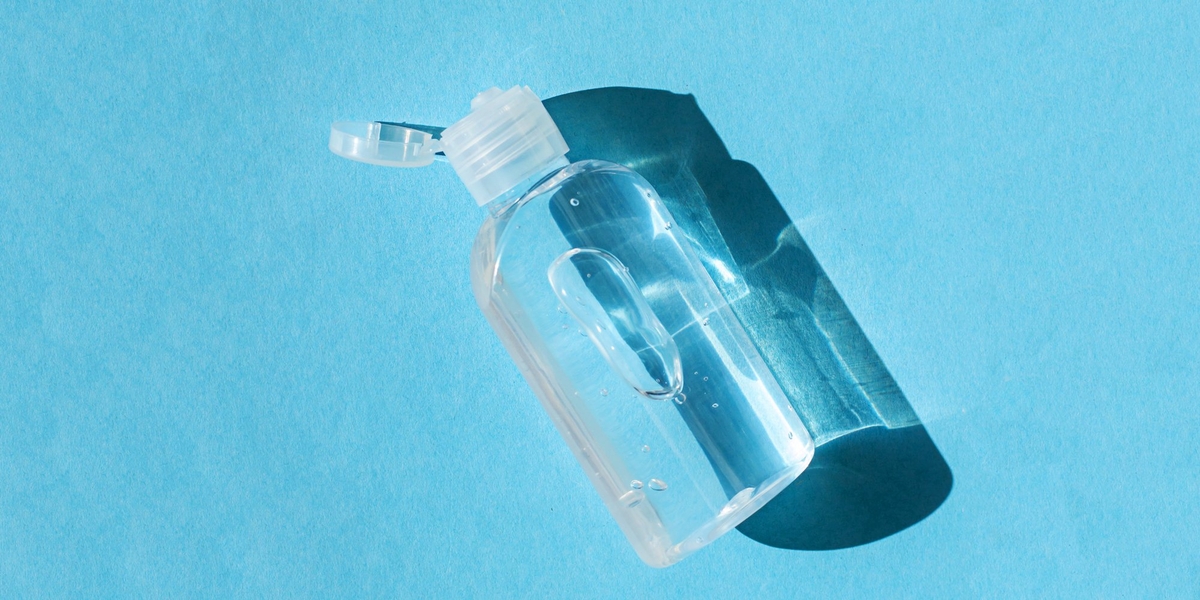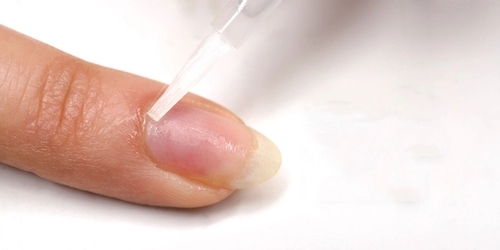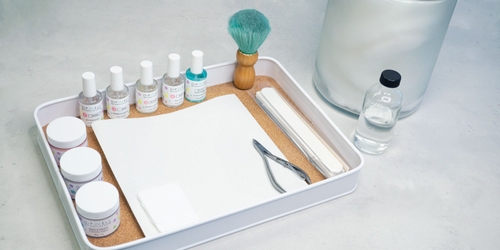These days, our newly adopted habits are all about the 3 S's.
- Sporting a mask
- Social distancing
- Sanitizing our hands
But that third one has a downside. Too much hand sanitizing using alcohol-based products may leave you with hands as dry as the Sahara desert. And cracked skin serves as the bacteria's doorway to your body. Yikes!
We don't want that to happen to your pretty dip powder paws. So, here are some ways to make sure they remain chic and not chapped—all while keeping germs at bay.

1. Check the ingredients of your hand sanitizer
Hand sanitizers can either be alcohol-based (ethanol or isopropanol) or non-alcohol-based (benzalkonium chloride). But a non-alcohol-based hand sanitizer may not work equally well for many types of germs compared to its alcohol-based counterpart.
How much alcohol should be in hand sanitizers to effectively kill disease-causing bacteria and viruses?
Centers for Disease Control and Prevention (CDC) recommends that you use alcohol-based hand sanitizers containing at least 60% ethyl alcohol.
Those with active ingredients other than ethyl alcohol, isopropyl alcohol, or benzalkonium chloride are not legally marketed, and the Food and Drug Administration (FDA) recommends that you avoid using them.
For regular updates on hand sanitizers that you should NOT use, bookmark this page.

2. Don’t forget to moisturize, moisturize, and moisturize some more
While using hand sanitizers is a good habit to help prevent the spread of infections and decrease the risk of getting sick, they can be drying.
So, after rubbing sanitizer all over your hands to keep 'em germ-free, don't forget to apply some moisturizer to restore hydration. Do so while your hands are still damp to seal the moisture into your skin and protect your skin barrier.
(Hot tip: Always reach for a hand ointment or hand cream instead of your regular lotion. Why? Because the former has a higher concentration of oil, while the latter has a higher concentration of water. Thus making hand ointments or hand creams more effective in bringing back moisture into your hands.)
Along with keeping your skin supple, you’ll want to protect your nails, too.
Did you know that many dippers find that DipWell manis help them protect their nails and grow them longer and stronger?
Now you know.

3. Opt for a hand sanitizer with hydrating ingredients
Hydrating hand sanitizers? Yup, they exist. It's that 2-in-1 life!
These hand sanitizers contain moisture-retaining humectants such as glycerin, aloe vera gel, or even essential oils.
Why you may want to consider this alternative:
- They soothe chapped skin and prevent it from drying even further
- They help replenish the nutrients you lose when your skin's natural oils get stripped by constant hand sanitizing or even by hand washing
- They provide additional antioxidant and antimicrobial benefits to your skin
Get free tutorials, special deals every week!
Sign up for fresh nail inspo & exclusive discounts delivered right to your inbox.
By subscribing, you acknowledge our Privacy Policy.
Just remember...
With these other ingredients included, you still want your hand sanitizer to have 60% or more alcohol content. This way, it's not too diluted with the humectants or oils that it becomes ineffective at sanitizing.
So while you may also see articles or tutorials on how to make your own hand sanitizer at home, it's best to leave the lab to the pros to make sure you get all the necessary ingredients right.

4. Wash your hands with soap + water
Nothing beats the basics. So when a sink is accessible, skip the sanitizer and go traditional.
How do you wash your hands right?
Set a timer for 20 seconds—or sing Happy Birthday twice!—then scrub your hands clean with soap and water.
Does the soap have to have antibacterial ingredients?
Not necessarily. Plain ol' soap will do. Studies have not proven that one is more effective than the other in getting rid of germs and preventing infections.
And the water... does it have to be hot?
Not at all. Both warm and cold running water are A-okay. Studies have not found that hot water has any added health benefits. So be careful not to scald yourself with boiling hot water. Warm or cold water is just fine.
For more information on when and how to wash your hands, read this resource from CDC.
And here's why you should go for soap and water over hand sanitizers (aside from the fact that the former is more effective in removing germs)...
With frequent use, alcohol in hand sanitizers can cause dip powder discoloration. Let the germs fade away, but not your dip color.

5. Wear gloves when cleaning your casa
If you're a chronic hand sanitizer user, it's best to protect your hands from other factors that contribute to dry, cracked skin.
Some home cleaning supplies contain chemicals that'll exacerbate the dryness and cause serious irritations and health issues. Not only that, but they may also lead to faded dip mani. We definitely don't want any of that.
So go ahead and go glam with gloves... even if they're just household cleaning gloves.
Or buy eco-friendly, non-toxic cleaning products the next time you do your supermarket run.
Happy, healthy hands mean happy, healthy dip nails
At these times, the safety of other people is literally in your hands—at home, at work, or when you're out and about.
Remember this when you pause for a hot second and think, "Maybe I can skip washing/sanitizing my hands just this one time." (Please don't!)
These days, you can never be too sure. Better to observe good hand hygiene.
You can learn more about hand sanitizers by taking this quiz. Promise we won't judge if you get some answers wrong. The more information we learn about disinfecting your hands and spreading disease-causing germs, the better for everyone.
We also want to know how you're staying safe doing your own mani at home. Please share your tips with us on Instagram @dipwellnails and use our official hashtag #DoYouDipWell. Better yet, share it with the members of DipWell's Dipper Club on Facebook. Have you joined yet? It's a great way to get inspired and know the dipping community a bit more. See you there soon!
Get free tutorials, special deals every week!
Sign up for fresh nail inspo & exclusive discounts delivered right to your inbox.
By subscribing, you acknowledge our Privacy Policy.




